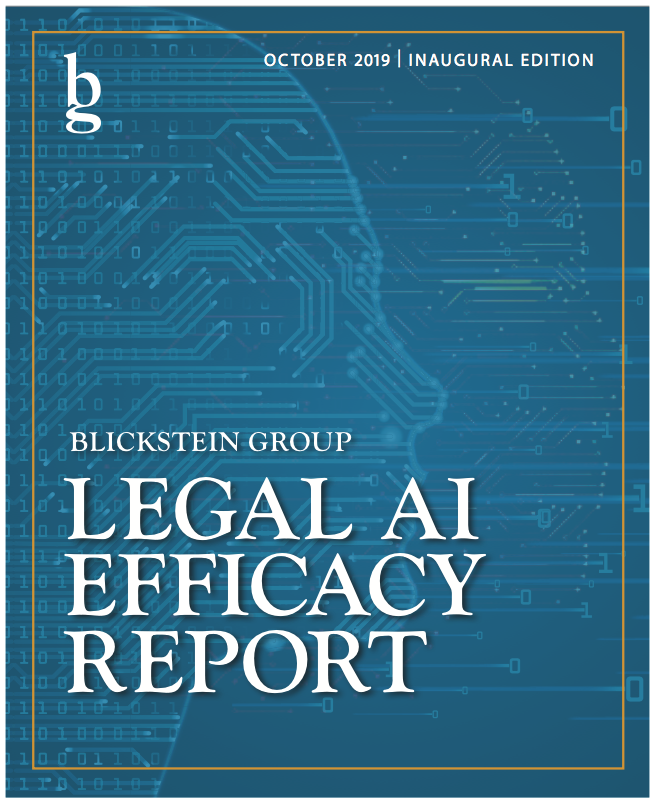Posted on January 29, 2020 by Brad Blickstein
 I’ve spent the better part of the past year working on the first-ever independent report covering dozens of AI-powered legal tech tools. It’s called the Legal AI Efficacy Report, and when I started the project, I thought of legal AI as one big thing. I hadn’t realized yet that a better way to look at it is as a number (at least 100) of “AI-powered legal tools” on the market that do a variety of different things.
I’ve spent the better part of the past year working on the first-ever independent report covering dozens of AI-powered legal tech tools. It’s called the Legal AI Efficacy Report, and when I started the project, I thought of legal AI as one big thing. I hadn’t realized yet that a better way to look at it is as a number (at least 100) of “AI-powered legal tools” on the market that do a variety of different things.
AI-enabled tools can solve a few types of legal and business problems, and there is value in working to identify those problems and how each tool solves them, rather than just saying “Legal AI.” We divided the tools into eight different categories—or problem sets:
AI Tools for Insight and Prediction
Some of the most promising AI-powered legal tools would be appropriately categorized as “insight and predictive tools.” These tools use artificial intelligence—typically machine learning—to provide information and analysis that would otherwise be difficult to synthesize. These solutions can provide enormous value both in the business and practice of law.
Business of Law Implications
One common use case is to take law firm billing data and employ it to provide a picture of matter workload and budget and tasks. These tools aggregate billing information and offer law firms the ability to track matters to budget, analyze productivity, compare matters and break them down by activity to find the unit cost of tasks and provide more accurate fee estimates to clients. They mine and analyze data to help firms budget and price matters.
Other tools are solving similar problems with different data, for example by offering information on attorneys, case types, judges and case duration to help clients understand the relationship between their attorney’s rates and the overall cost of a case. These tools move hiring from a relationship-driven process to a metrics-driven one.
Practice of Law Implications
Some of the best-known AI-powered tools are ones that help litigators understand more about different courts, judges and adversaries. Litigators typically go into a case with only anecdotal information about a judge, court or opposing counsel. Sometimes it’s based on personal experience or often the only information is the result of what is known as a “pardon the interruption” email sent around the firm. These tools instead analyze data from PACER or state court filings to provide lawyers with information about outcomes that can help them make better decisions, such as transferring their case to a different district or taking an alternate approach to litigation strategy.
Other tools can study a company’s own internal data to detect risk associated with employees, vendors and customers in the areas of HR, litigation, regulatory and compliance. These models can be used to find the smoking guns or other key documents and information in e-discovery or investigation datasets, or they can be applied in surveillance to proactively detect and predict a risk event.
The insight and predictive tools covered in the Legal AI Efficacy Report include Brainspace, Clocktimizer, Gavelytics, Lex Machina, Lexis Context, Manzama Insights, NexLP and Premonition.
While many of the AI-powered legal tools on the market, such as the contract management tools we will cover in part 2 of this series, are designed to improve efficiency, these tools also provide information that legal professionals don’t have and can’t get any other way. In addition they are not providing any service that could be considered legal work and are not putting any jobs at risk. That may make these predictive tools a better place for nervous firms to start.
***************
Brad Blickstein is principal at Blickstein Group and partner and co-head of NewLaw at Baretz+Brunelle. More information about his Legal AI Efficacy Report can be found at www.legalaireport.com.
Recent AI News